Drip Marketing is a powerful tool in an email marketer’s toolkit. If you’re not familiar with the term, don’t worry. In this article, we’ll cover what drip marketing campaigns are and why they are important.
What is Drip Marketing?
You may have heard it called automated email campaigns, autoresponders, lifecycle emails – among other terms – but they all refer to the same fundamental principle.
The team at Campaign Monitor define drip campaigns perfectly:
“Drip campaigns are pre-written, ongoing campaigns that move email subscribers toward a final conversion point. They are often used to provide ongoing value to subscribers, while also helping keep the brand top-of-mind. Often, these emails slowly “drip” helpful information, products or tips over days, weeks or months.’
What does this mean for businesses?
We are glad you asked!
Businesses can send time-bound, relevant and tailored content to users at each phase of the buyer’s stage on auto-pilot.
There is no need to manually write and send each individual email, which leaves more time to focus on other pressing issues.
And the great thing is that companies who excel at drip marketing campaigns generate 80% more sales at 33% lower costs.
The benefits and power of email drip marketing and marketing automation are becoming increasingly popular. A few key benefits include being able to:
- Send personalised and relevant messages at the right time in the consumer sales cycle.
- Increase sales and generate more ROI.
- Prepare customers for an upcoming event, the launch of a new product, the opening of a new store with a series of automated emails.
- Improve lead nurturing and build long-term customer retention.
- Save time and resources by utilising automation.
Understanding Workflows
Drip Marketing allows you to communicate with leads based on their actions and where they sit in the sales funnel. You can then tailor your email marketing based on these actions and behaviours, enabling you to nurture these leads further down the funnel by capitalising on their actions, behaviours and personas.
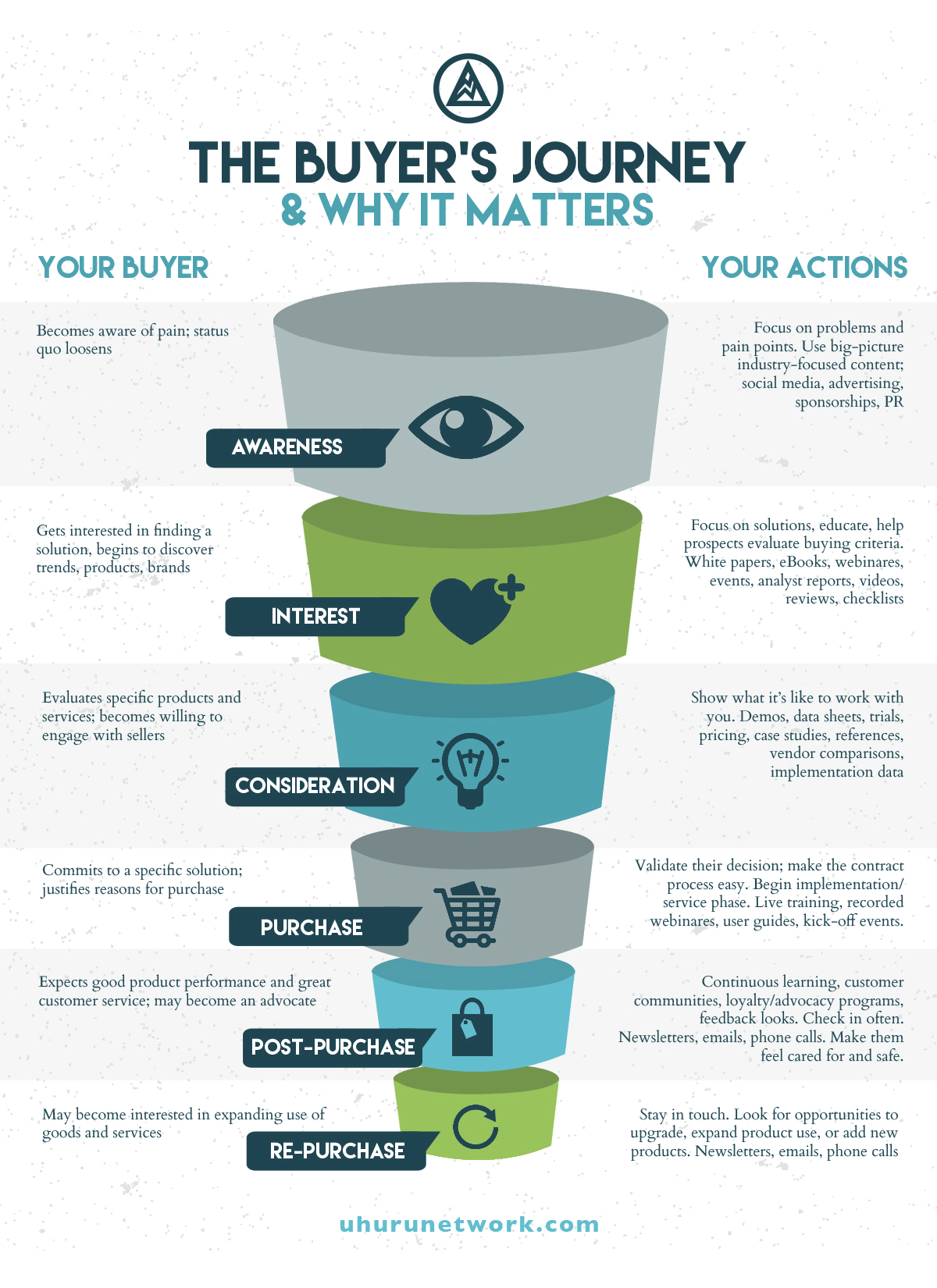
(image via uhurunetwork)
With Drip Marketing, every response or lack of one triggers another round of emails. These email correspondences “drip” out over an extended period of time to continue communication with potential leads.
Drip Campaigns are created through a series of workflows. They are simply visual illustrations of the journey you want your consumers to take.
Workflows decide what to send (or not to send) to users based on their actions, behaviours or timing.
Here is a helpful visual aid:
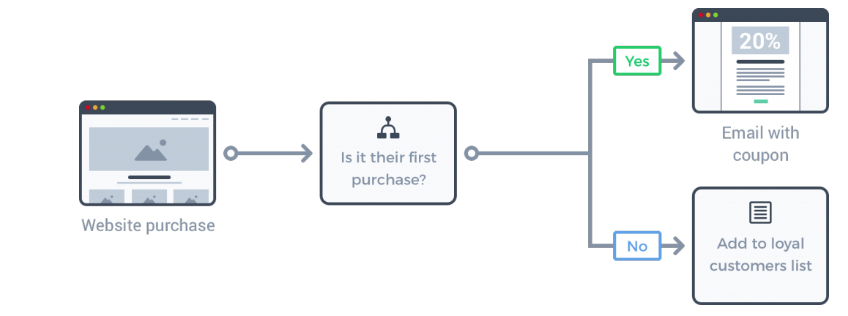
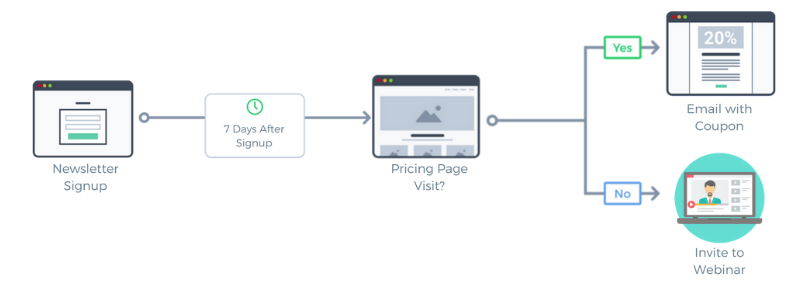
(Images via sendinblue)
Drip campaign workflows can be as extensive and complex as you want them to be, mapping out numerous paths of emails and pathways depending on how recipients respond.
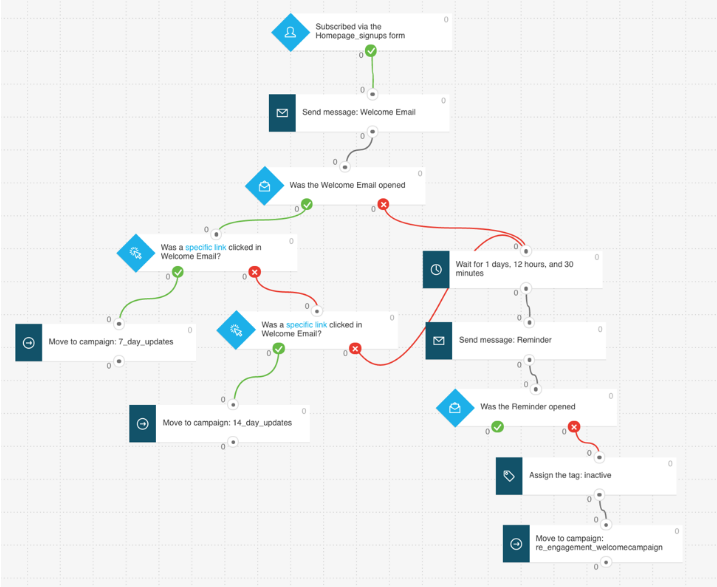
(image via getresponse)
Why is Drip Marketing Important?
50% of leads are qualified but are not necessarily ready to buy something from your business. Each lead is at different phases of the buying stage with unique wants and needs.
For example:
- They might have subscribed to your newsletter and are in the awareness stage
- They have just downloaded a case study to evaluate your product
- Alternatively, they have just signed up for one of your free trials to understand more about your product/service before making a final purchase.
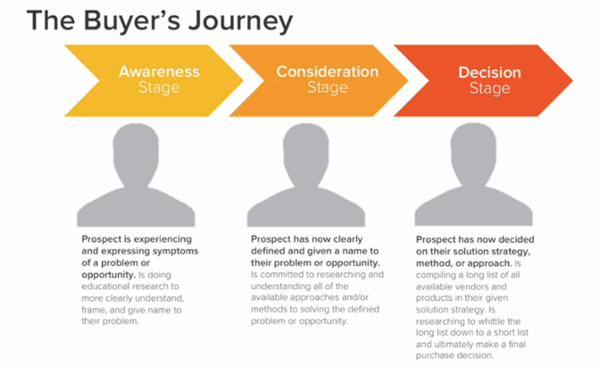
(image via impactbnd)
Each stage requires strategetic email communication that should be targeted, personalised and relevant to lead.
How does Drip Campaigns Compare to Traditional Email Marketing?
So, you have an email marketing campaign that includes product-related news, newsletters and updates. Moreover, while sharing this information via a once off promotion can be an effective way to keep users engaged, it’s important to create a strategy that is personalised and relevant to each individual customer.
To give you an example:
Case 1: Traditional Marketing
Day 1: You receive an email from an e-commerce store about the latest product recommendations.
Example: Itunes New Releases Email below:
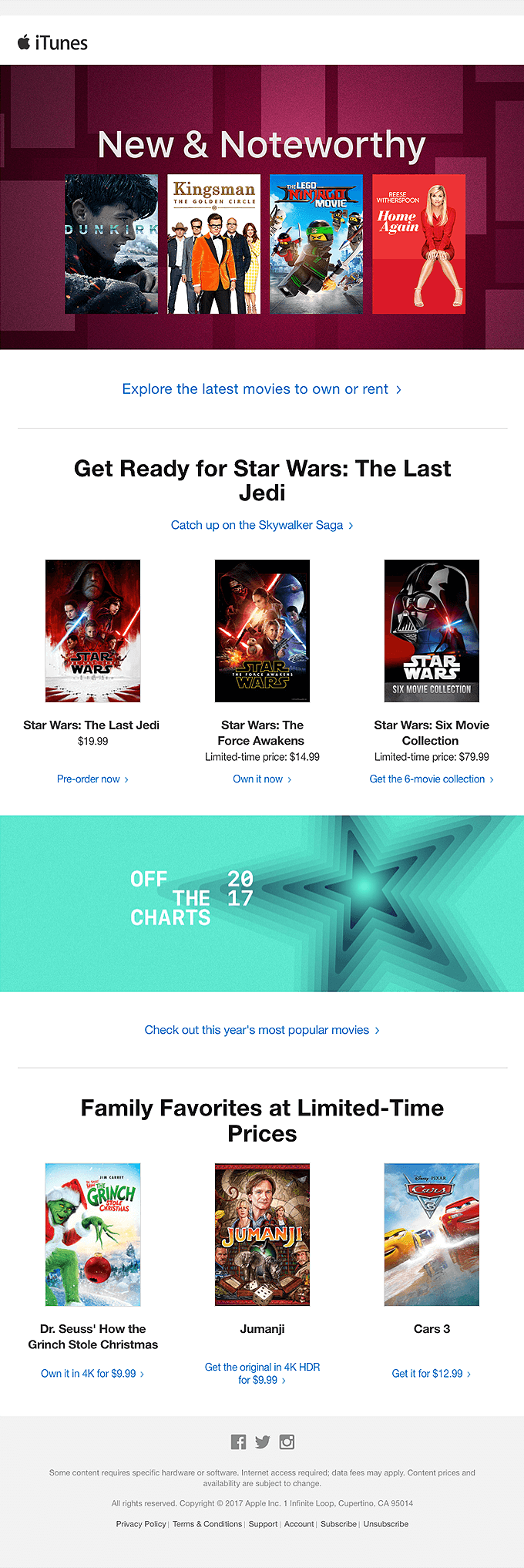
(image via reallygoodemails)
Now with drip marketing, here is how it would differ…
Case 2: Drip Marketing
Day 1: You receive an email from an e-commerce store about the latest product recommendations, however, you do not open the email.
Day 5: You receive another email, but this time they are offering you 10% off their jackets. You click through the email and have a look at black leather jackets. However, you still don’t proceed with buying the jacket.
Day 11: You receive a third email that all leather jackets have a 20% off sale. You click through and add a leather jacket to your cart. However, you get distracted and abandon the cart.
Day 12: You then receive a fourth email reminding you that you have left the leather jacket in your cart with a message that creates a sense of urgency and fear of missing out. You quickly click through and finalise your purchase.
See the difference between the two forms of marketing? Drip campaigns send the right message, to the right person, at the time that they are open to receiving emails. You have tapped into your customer’s needs with every email until they have become purchase ready.
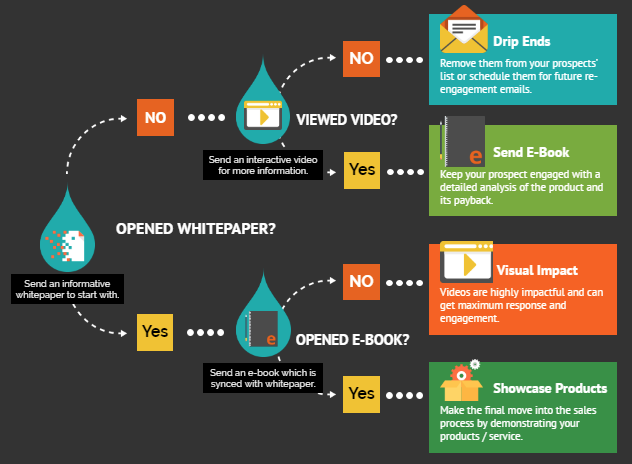
(Image via emailmonks)
Example: Penguin Random House
A great example is Penguin Random House who sent an email to subscribers showcasing their best-selling books.
One of the subscribers opened up the email and clicked through to the book, The Game of Thrones: Illustrated Edition, however, didn’t make a purchase.
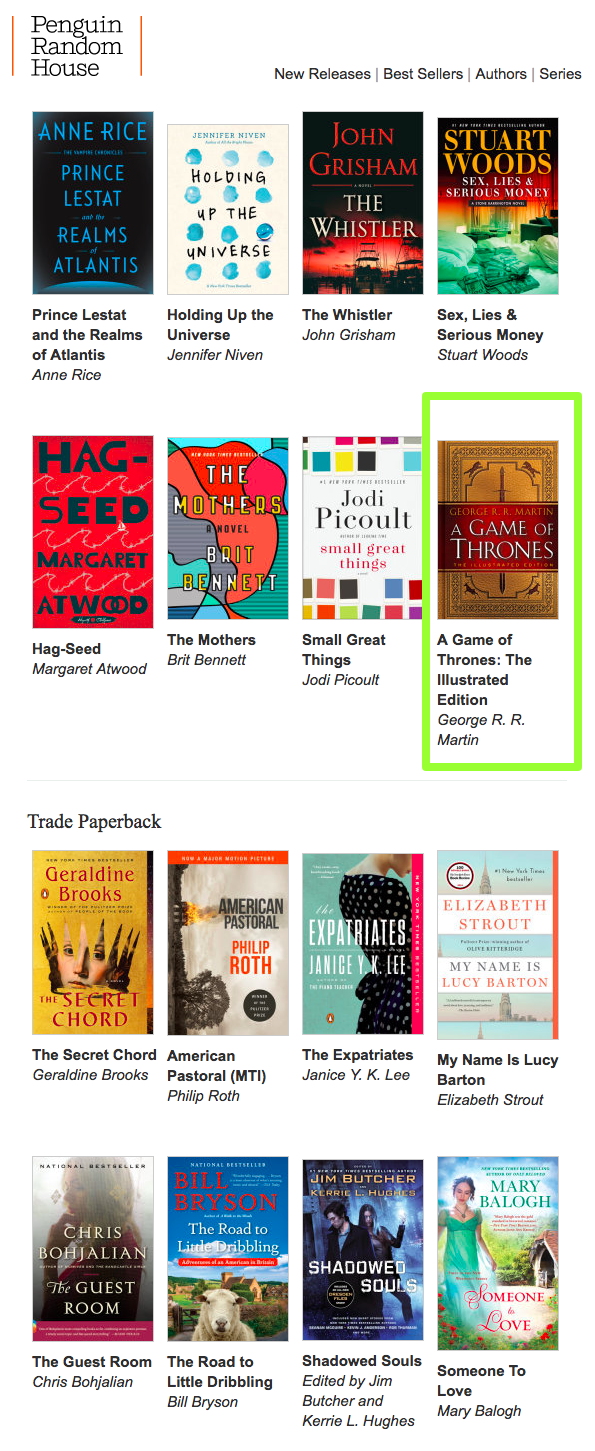
(image via Campaign Monitor)
But, Penguin Random House now knows what book this customer is interested in, so they have the knowledge to encourage the user further down the sales funnel through email marketing automation and personalised content.
When the subscriber initially clicked on the book title, it served as a trigger which sent out a second email to them. This time, the second email in the workflow provides a discount to the subscriber with a selection of books on display. Can you guess what book was at the top of the list?
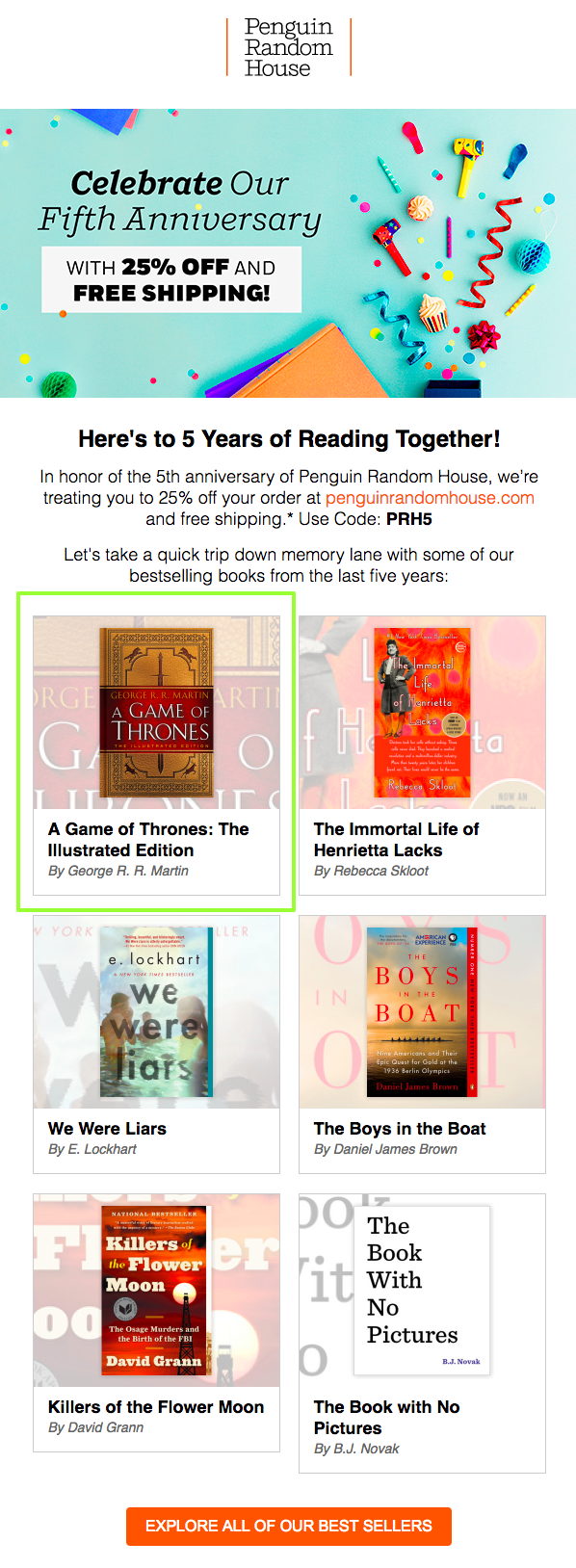
(image via Campaign Monitor)
You guessed it, The Game of Thrones: Illustrated Edition.
The publisher had an email workflow journey set up and the customer triggered the email due to their actions.
If the subscriber then clicked on the book in the second email and added it to their shopping cart but later abandoned their cart, this would trigger a third email with a reminder about the book that they had left in their cart.
This is precisely why drip email marketing is more effective than just sending out bulk emails to your entire database.
(Image via emailmonks)
Conclusion
Drip Marketing campaigns are effective because they help progress customers down a sales or marketing funnel. Rather than bombarding a customer with too much information in a single message, slowly drip-feeding information helps make content more digestible and actionable.
Drip Marketing also allows marketers to counter sales objections by delivering appropriate messaging based on behaviours exhibited by the customer. This objection handling allows for greater conversion rate success and greater ROI compared to traditional email marketing.
To find out how to improve your email marketing and marketing automation strategy, download our inaugural 2018 Australian Email Benchmark Report. You can find the link to the report here.


